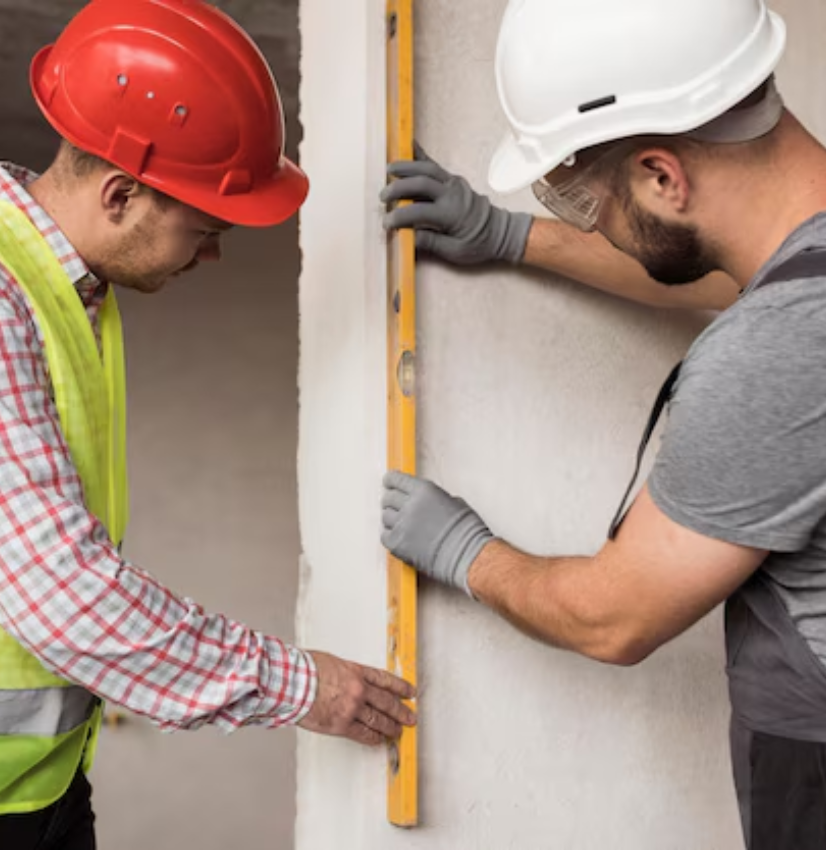Open-concept living is more than just a design trend—it’s a lifestyle transformation. Modern homes today often feature expansive, fluid spaces where family gatherings, entertaining, and daily living can occur without the confinement of traditional walls. But creating such open spaces often requires the removal of load-bearing walls, a process that must be done carefully to ensure the safety and structural integrity of the home.
In this article, we’ll guide you through everything you need to know about safely removing load-bearing walls. From understanding what a load-bearing wall is, to exploring the benefits and risks, and how to ensure your project is done right, we’ll equip you with the knowledge to make informed decisions for your home renovation.
What is a Load-Bearing Wall?
The Role of Load-Bearing Walls
A load-bearing wall is an integral structural element that helps support the weight of the house. These walls carry the load of the roof, upper floors, and anything above it, transferring the weight to the foundation of the home. Unlike non-load-bearing walls, which are typically used for dividing rooms, load-bearing walls are crucial for the building’s stability.
How to Identify a Load-Bearing Wall
Identifying a load-bearing wall is not always straightforward. Generally, if a wall runs perpendicular to the floor joists or roof ridge, it is likely load-bearing. Checking the blueprints of your home can also offer clues. However, for accuracy, it is recommended to consult with a structural engineer or a contractor to confirm.
Benefits of Removing a Load-Bearing Wall
Maximizing Space and Flow
One of the primary benefits of a load-bearing wall removal is the increased space and improved flow it creates. Open-concept designs remove the boundaries between rooms, allowing for more natural light and better visibility throughout the home. This is particularly appealing for homes with smaller rooms, as it can make the space feel larger and more welcoming.
Increased Property Value
A well-executed renovation that includes the removal of load-bearing walls can significantly boost the value of your home. Open floor plans are highly sought after by buyers, making this investment a smart choice for homeowners looking to increase their property’s appeal on the market.
Enhanced Aesthetics
Removing a load-bearing wall gives you the freedom to reimagine your living space. It allows for modern design elements such as kitchen islands, large dining areas, and seamless integration of living spaces. The end result is a sleek, contemporary aesthetic that enhances the overall appeal of your home.
Risks and Considerations in Load-Bearing Wall Removal
Structural Integrity: Why Safety Comes First
While the benefits of removing a load-bearing wall are clear, it’s essential to approach the project with caution. The structural integrity of your home is at stake, and removing a load-bearing wall without proper reinforcement can lead to serious consequences, including the collapse of part or all of your home.
Potential Complications
The process of removing a load-bearing wall can reveal hidden structural challenges. For example, load redistribution may be more complex than anticipated, or there may be unforeseen issues with the foundation. Additionally, electrical wiring, plumbing, and HVAC systems often run through walls, which may need to be relocated during the renovation. These complexities highlight the need for professional expertise throughout the process.
The Process of Safely Removing a Load-Bearing Wall
Initial Assessment and Planning
The first step in any load-bearing wall removal project is a thorough assessment. A structural engineer should be consulted to evaluate the wall’s role in your home’s overall structure. This assessment will inform the planning process, ensuring that any necessary reinforcements are accounted for before the wall is removed.
During this phase, temporary supports are typically installed to hold up the load while the wall is being removed. Skipping this step can result in immediate damage, including sagging ceilings and structural failure.
Reinforcement Methods After Wall Removal
Once the wall is removed, the load must be redistributed to other parts of the house. This is typically done by installing beams or columns. Steel or laminated veneer lumber (LVL) beams are common choices for this type of reinforcement. These beams are installed in place of the removed wall to carry the load previously supported by the wall.
Final Inspection and Approval
Once the wall has been removed and the necessary reinforcements are in place, the project must be inspected by local building authorities. In many regions, a permit is required for structural changes like these, and passing the inspection is crucial for ensuring that your home meets safety and building code standards.
DIY vs. Hiring Professionals
The Risks of DIY
Although DIY projects are popular, removing a load-bearing wall is not one of those tasks that should be done without professional help. The complexity of assessing the structure, properly reinforcing the load, and navigating electrical or plumbing systems makes this a job for experienced contractors and engineers. Attempting this on your own could lead to costly mistakes or even dangerous outcomes.
How to Choose the Right Contractor
Finding the right contractor for the job is essential. Look for licensed and experienced professionals who have specific experience with structural modifications. A good contractor should provide references, offer a detailed estimate, and work closely with structural engineers to ensure that the project is executed safely.
Case Study: A Successful Load-Bearing Wall Removal
Real-World Example
Let’s take the example of a suburban home where the homeowner wanted to create a larger, more connected living space by removing a load-bearing wall between the kitchen and the dining room. After consulting with a structural engineer, a steel beam was installed to replace the wall. The result was a bright, open area perfect for family gatherings and entertaining, with the home’s structural integrity fully preserved.
Cost Breakdown of Load-Bearing Wall Removal
Factors Affecting Costs
The cost of removing a load-bearing wall can vary widely depending on several factors, including the size of the wall, the materials needed for reinforcement, and the complexity of the project. Other cost considerations include relocation of utilities like plumbing or electrical systems that may be hidden within the wall.
Average Cost Ranges
On average, homeowners can expect to spend between $3,000 and $10,000 for a standard load-bearing wall removal project. Larger or more complex projects that require extensive reinforcement or utility relocation can cost more.
Conclusion: Transform Your Home with Confidence
Removing a load-bearing wall is a powerful way to transform your home into an open, modern space. While the process requires careful planning, expert advice, and professional execution, the results can be stunning. If you’re dreaming of an open-concept home, start by consulting with professionals who can guide you through the safe removal of load-bearing walls and help you achieve your design goals.
FAQs
- What happens if I remove a load-bearing wall without proper reinforcement?
- Removing a load-bearing wall without reinforcement can lead to structural instability, including sagging ceilings or, in extreme cases, collapse.
- Do I need a permit to remove a load-bearing wall?
- Yes, in most areas, a permit is required, and the project must pass an inspection to ensure it meets local building codes.
- How can I tell if my wall is load-bearing?
- A professional can determine this, but typically, walls perpendicular to floor joists or the roof ridge are load-bearing.
- Can I remove a load-bearing wall by myself?
- It is strongly advised to hire professionals for this task due to the structural risks involved.
- How much does it cost to remove a load-bearing wall?
- Costs typically range from $3,000 to $10,000, depending on the complexity of the project.



